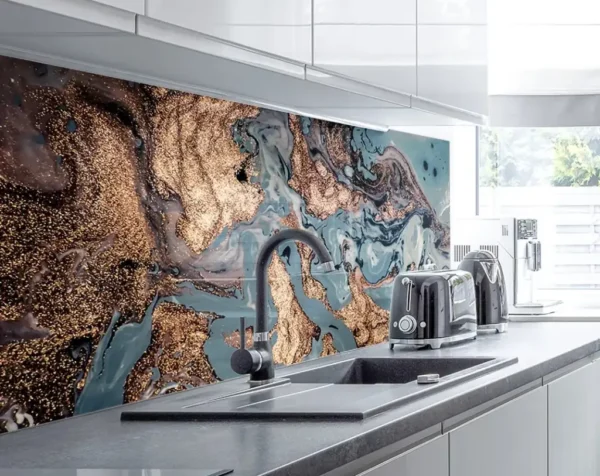
10 Driveway Maintenance Tasks to Add to Your To-Do List

Your driveway takes a lot of wear and tear, from daily vehicle traffic to exposure to the elements. Keeping it in good condition doesn’t just improve your home’s curb appeal—it also prevents costly repairs down the road. Whether your driveway is asphalt, concrete, or pavers, regular maintenance is essential to keep it looking and functioning at its best.
Here are 10 essential driveway maintenance tasks you should add to your to-do list to keep things smooth and trouble-free.
1. Clean Your Driveway Regularly
Cleaning your driveway is one of the simplest and most effective ways to maintain it. Over time, dirt, leaves, and debris can accumulate, leading to staining or even damage. Regular cleaning keeps your driveway looking fresh and helps prevent buildup that can lead to cracks or deterioration.
A good sweeping every few weeks can work wonders. For a more thorough clean, use a pressure washer to remove stubborn dirt, oil stains, and moss. Just be careful with the pressure setting to avoid damaging the surface, especially with concrete or pavers.

2. Seal the Surface
Sealing your driveway is another critical form of driveway maintenance. A quality sealant creates a protective barrier against water, UV rays, and oil spills, all of which can weaken the surface over time. Asphalt driveways, in particular, benefit from regular sealing every 2-3 years to prevent cracks and fading.
If your driveway is concrete, sealing it can also help protect against cracks and stains. Make sure to choose the right type of sealant for your material, and apply it on a clean, dry surface for maximum effectiveness.
3. Fill Cracks Early
Cracks in your driveway are inevitable, but addressing them early can save you from bigger problems later on. Small cracks allow water to seep in, which can cause the cracks to widen or even lead to potholes. When water gets underneath the driveway surface, it can freeze and expand, worsening the damage.
For asphalt driveways, use a crack filler or patching compound to seal the cracks. For concrete, a concrete contractor working in Los Angeles using a specialized crack repair product will do the trick. Tackling these small repairs early on keeps your driveway looking good and prevents costly repairs down the line.
4. Control Weeds and Grass Growth
Weeds and grass can sprout up in the cracks of your driveway, especially between pavers. While they might seem harmless at first, they can cause significant damage over time by widening cracks and weakening the structure of the driveway.
Regularly pull out any weeds or use a weed killer to prevent them from growing. For paver driveways, consider adding polymeric sand between the joints to discourage weed growth and maintain a firm, stable surface.
5. Monitor Water Drainage
Poor drainage is one of the biggest enemies of a driveway. Standing water can weaken the surface and lead to cracks, potholes, and even foundation issues. Pay attention to how water flows off your driveway after a rainstorm. If you notice puddles or areas where water isn’t draining properly, it’s time to address the issue.
You may need to regrade the driveway to improve the slope or install a drainage system to help water flow away. Fixing drainage problems early will prevent long-term damage and keep your driveway in top shape.
6. Patch Potholes
Potholes can be a real pain, both for your car and your driveway’s appearance. Once a pothole forms, it tends to get worse quickly, so it’s important to repair it as soon as you notice one.
For asphalt driveways, patching kits are available that make filling potholes a DIY project. If the damage is extensive, you might need to call in a professional for a more permanent fix. Either way, addressing potholes early keeps your driveway smooth and safe.
7. Prevent Oil and Stain Damage
Oil and other fluids can leak from your car and leave unsightly stains on your driveway. If left untreated, these stains can penetrate the surface and weaken the material over time.
To prevent this, clean up any spills as soon as they happen using an absorbent material like cat litter or baking soda. For tougher stains, a degreaser or specialized driveway cleaner can help lift the oil from the surface. It’s also a good idea to seal your driveway regularly to protect against future spills.
8. Check for Edge Erosion
The edges of your driveway are particularly vulnerable to erosion, especially if there’s heavy foot or vehicle traffic near them. Over time, the edges can break away, leading to cracks and uneven surfaces.
To prevent this, make sure the area around the edges of your driveway is well-supported. You can use edging materials like concrete curbs, stone, or bricks to reinforce the edges and protect against erosion. Keeping grass and soil from encroaching on the driveway also helps maintain its shape.
9. Relevel Sunken Pavers
If you have a paver driveway, over time you might notice some pavers sinking or becoming uneven. This is often caused by the settling of the ground underneath or poor drainage.
To fix this, you’ll need to remove the sunken pavers, add more sand or gravel underneath to bring them back to the right height, and then replace the pavers. It’s a fairly simple fix but an important one for maintaining both the appearance and function of your driveway.
10. Watch for Snow and Ice Damage
Winter weather can take a toll on your driveway, especially with the freeze-thaw cycle that causes cracks and potholes. Snow and ice can also make your driveway dangerously slippery, so it’s important to clear them regularly.
When shovelling or plowing snow, be careful not to scrape or damage the surface of your driveway. Avoid using harsh chemical deicers, as they can degrade the material over time. Instead, opt for sand or salt alternatives that are gentler on the driveway.
Keep Your Driveway in Top Shape
Taking care of your driveway might not be the most exciting task on your to-do list, but it’s worth the effort to maintain its condition and extend its lifespan. By keeping up with these simple maintenance tasks, you’ll prevent small issues from turning into costly repairs, and you’ll keep your driveway looking great for years to come.














































